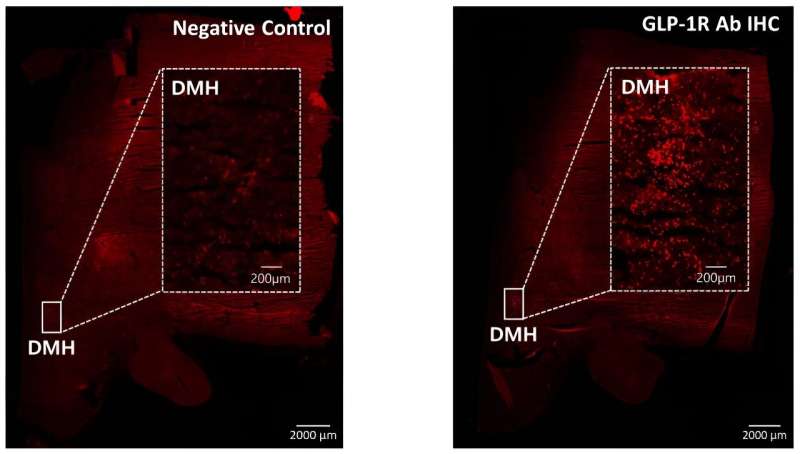June 28, 2024 report
This article has been reviewed according to Science X's editorial process and policies. Editors have highlighted the following attributes while ensuring the content's credibility:
fact-checked
peer-reviewed publication
trusted source
proofread
Two groups of neurons linked to feeling full identified—one for before-meal fullness and one for after-meal fullness

A team of biomedical researchers from the U.S. and the U.K. has identified two groups of neurons that take part in the process of feeling full—one before eating and one after. In their study, published in the journal Science, the group conducted experiments with mice to learn more about factors in the brain that lead to feelings of fullness after eating.
Ozempic and other similar drugs are making headlines due to their effectiveness in helping people to lose weight. But how such drugs work has not been well understood. In this new study, the research team sought to find the parts of the brain that are impacted by the drugs and what the drugs do to the brain to aid in weight reduction.
Drugs such as Ozempic, the researchers noted, are similar to a hormone called glucagon peptide 1 (GLP-1)—the body uses it to regulate blood sugar levels, which is why the drugs were developed to treat diabetes. Doctors noticed that patients on the drug tended to lose weight, which they attributed to a loss of appetite.
To learn more, the research team began by asking obese volunteers to take part in a study, rating their feeling of fullness before and after eating a plate of fried chicken. They found that those volunteers who were taking a liraglutide (a drug similar to Ozempic) described themselves as feeling full before they ate and even more so after eating.
The research team then turned to test mice, focusing specifically on the dorsomedial hypothalamus, a part of the brain known to be involved in feelings of hunger or fullness, which is mediated by neurons with GLP-1 receptors.
By artificially stimulating the neurons as the mice were presented with food and again after they ate it, the researchers were able to zero in on those that were specifically responsible for generating feelings of fullness, both prior to a meal and after. They then showed that GLP-1 drugs act on both types of neurons, which explains why they work as well as they do.
More information: Kyu Sik Kim et al, GLP-1 increases preingestive satiation via hypothalamic circuits in mice and humans, Science (2024). DOI: 10.1126/science.adj2537
© 2024 Science X Network





















